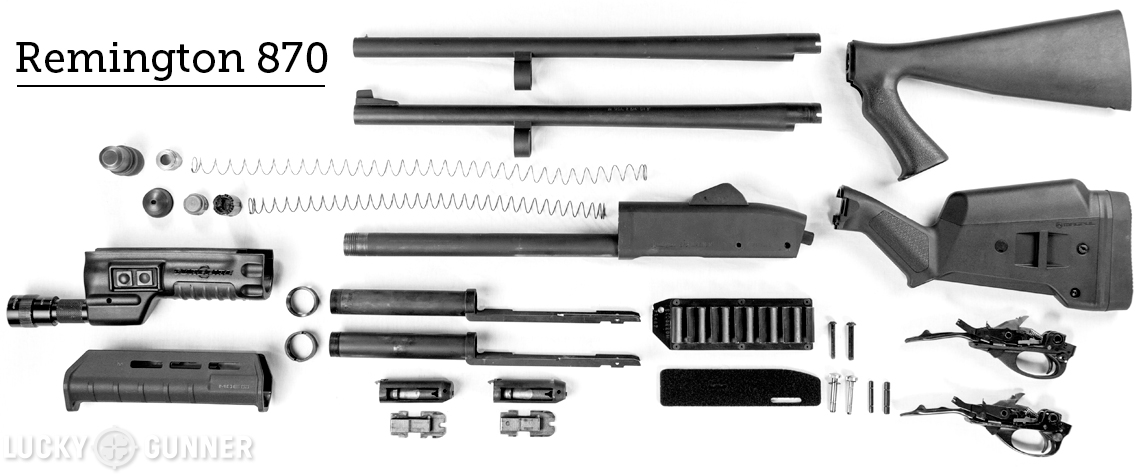For anyone considering a shotgun for personal protection inside the home, the Remington 870 is an excellent choice… usually. The viability of the 870 as a self-defense tool is completely dependent on how the gun has been set up and the quality of the parts used. In the previous installment of our series on defensive shotguns, I covered some of the basics of setting up a Remington 870 for home defense and the options you have when selecting a base model. My personal recommendation is to look for a used surplus 870 Police and swap out worn or unwanted parts as needed, but there are plenty of other routes to owning a solid fighting 870. A few days ago, I posted the video below to add a few technical “how-to” details as a follow-up.
Video: Modifying the Remington 870
There’s really not much involved in performing the most common modifications to the Remington 870. If you can follow the instructions in the owner’s manual for routine disassembly, you can already do 75% of the changes I cover in the video. Typically, the challenges with working on the 870 come from the little quirks we always get from a product design that’s been in production for over 60 years. Manufacturing standards and materials used change over the years, and small “features” are added or removed. The key becomes in knowing what can or can’t be done depending on which variant of the 870 you have, when it was made, and the accessories already installed.
Adding a magazine tube extender is a great example. Let’s say you want to be able to load more rounds into your 870, so you hop online and buy one of the many +2 extenders available — a simple metal tube with threads on one end, and a spring. What could go wrong? Then you try to install the thing and discover some curious indentations at the end of your stock mag tube. These dimples, only present on more recent versions of the 870 Express, will have to be removed before the extender will work. That’s a modification that’s not everyone will find easy to knock out in their garage, and has put a lot of 870 owners into one of those “I wish I had known about this earlier” situations.
I tried to cover the most common of these quirks in the last two videos, but there are some that I didn’t mention, and likely many more that I’m not even aware of. That’s another reason why I recommend starting with an 870 Police or a Wingmaster if you plan to make major changes to your 870 or shoot it extensively. In general, it seems that these models have far fewer surprises to deal with when compared to the Express line, regardless of what year they were produced.


